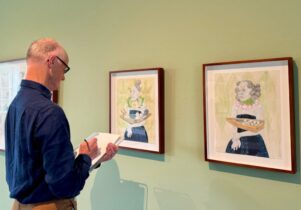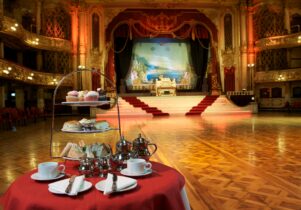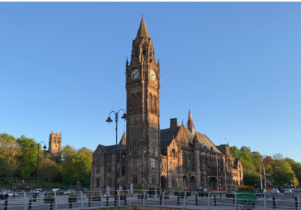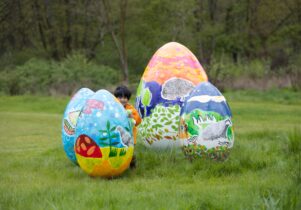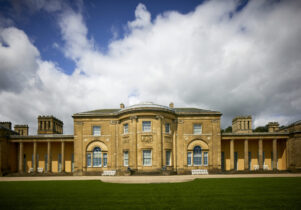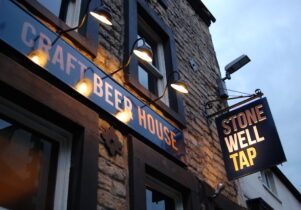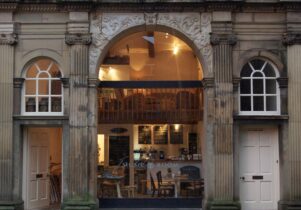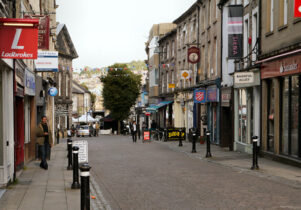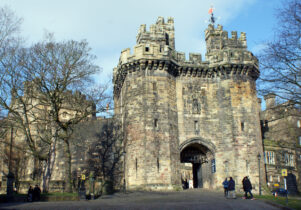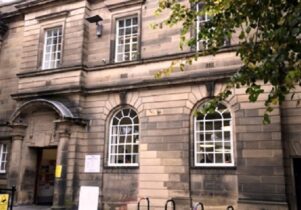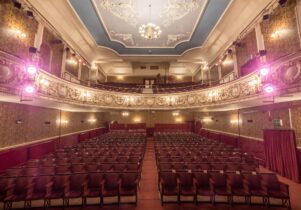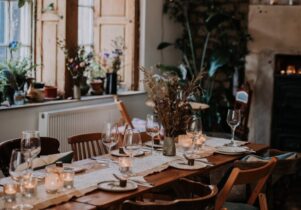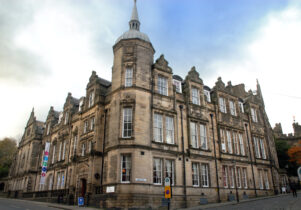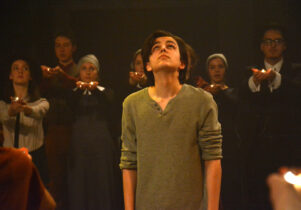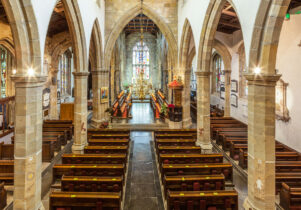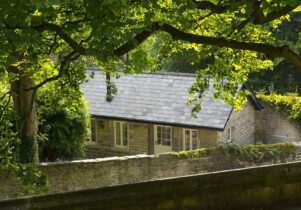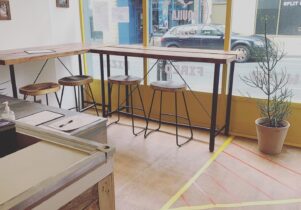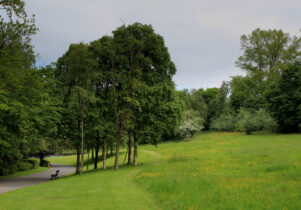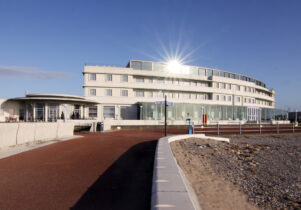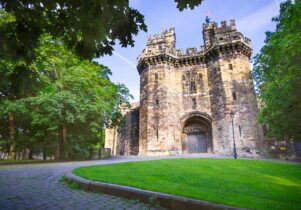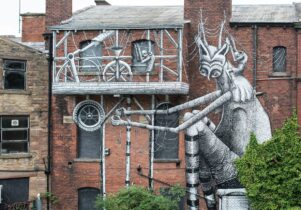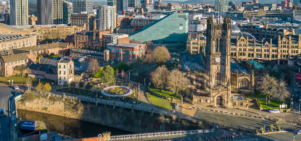Judges’ Lodgings
Polly Checkland Harding
A little way down the hill from the imposing Lancaster Castle and close to Lancaster Priory, Judges’ Lodgings is the oldest townhouse in Lancaster – a seasonal museum with beautiful, wood panelled period rooms and a Victorian school room inside, which is also the home of the Museum of Childhood. This stately building, with its mullioned front windows and grand porticoed entranceway, faces out onto a wide cobbled square, and is open to the public after undergoing careful refurbishment (tickets £3 adults; £2 concessions; children free). Judges’ Lodgings has a long – and at points sinister – history; this was also the former home of Thomas Covell, coroner and keeper of Lancaster Castle, most famous for jailing the group of people accused during the Pendle witch trials.
The Pendle witch trials were one of the most notorious court cases of the 17th century, in which 12 people, most of whom were women, were charged with the murder, using witchcraft, of ten others. Ten of the twelve accused were tried at Lancaster Assizes in August 1612, having walked over 50 miles from Pendle; their route is now known as the Pendle Witch Trail, and passes through the Forest of Bowland, an Area of Outstanding Natural Beauty. Locked in the castle’s damp cells, the accused were imprisoned for months before being tried; one of the group died in custody. Ten of the original 12 were found guilty and hanged, with only one acquitted, in what proved to be a very dark chapter in Lancaster’s history.
Judges’ Lodgings later became a place of residence for the judges visiting the Assizes Court at the Castle, playing this role between 1776-1975. The building was subsequently turned into the heritage visitor attraction that it is today, but was threatened with closure in 2016, as part of a programme of local council cuts. After three years of campaigning and restoration by The Friends of Lancaster Judges’ Lodgings, the building was reopened in 2019. It remains a popular destination, hosting exhibitions and events, although visitors should note that there’s limited disabled access due to the building’s Grade I listed status.
The museum is open between March and November on Thursdays through to Sundays, between 11am and 4pm.

